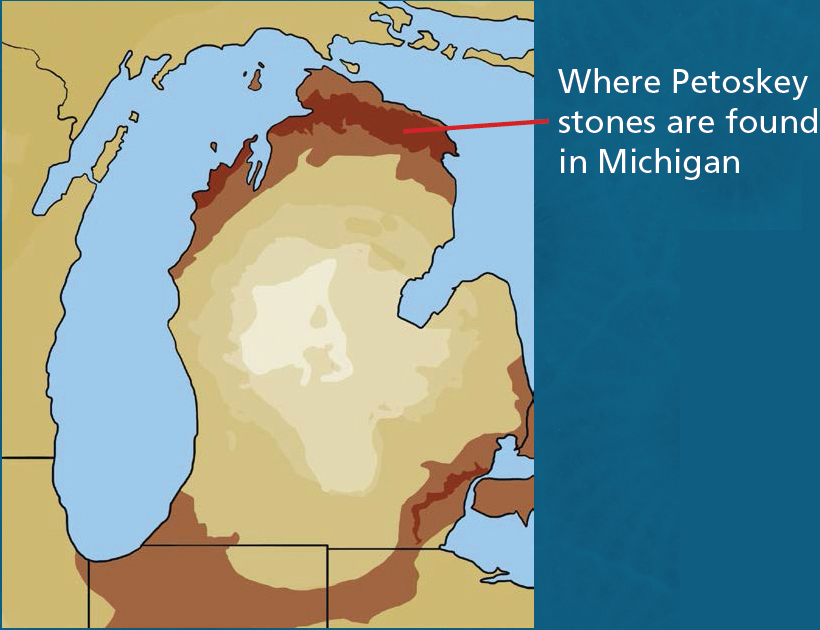
Petoskey stones have long been easy to find in Michigan. The Little Traverse Bay, where the highest concentration of Petoskey stones are found, is a beautiful natural area that has drawn in collectors for many years and offered them beautiful water-worn specimens of their own.
But while finding them may be a fairly simple matter, answering the question of “what is a Petoskey stone?” is a little more complex. With over 400 million years of history, there’s a lot to know about the little hexagons trapped in the rock, and it all starts in the ancient seas of Earth. In this section, we’ll explore the deep history of this enigmatic stone and how it came to be.


Specimen courtesy of Dean Montour
Petoskey within Southern Michigan
Petoskey Stone Is a Fossil Coral
Hexagonaria and Other Rugose Corals
The Life Story of the Petoskey Stone
Other Factors in the Extinction
How Old Are Michigan’s Petoskey Stones?
The Minerals That Make Up Limestone